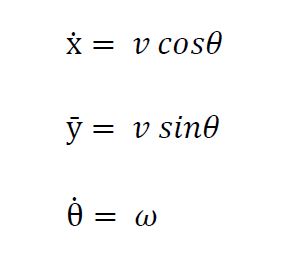Unfortunately, you're trying to apply a linear controller (the L of LQR) to a nonlinear system. In general, this doesn't work.
As an approximation, you could linearize the system. If the nonlinearities are small it's common to linearize about a nominal point such as $\theta=0$, but in your case this might not work well since it would eliminate any lateral dynamics.
$$
\begin{align}
\dot{x} = v
\\
\dot{y} = 0
\\
\dot{\theta} = \omega
\end{align}
$$
Another option would be to linearize every timestep. This could get expensive though as your feedback gain matrix, $K$, also needs to be recalculated each time.
Finally, a middle ground could be to linearize about several predefined points, e.g. $\theta=[-20,-15,-10,0,10,15,20]$. At each timestep you would separately compute the control action using the $K_j$ computed for each of these linearization points and then interpolate between those values based on the current $\theta$.
